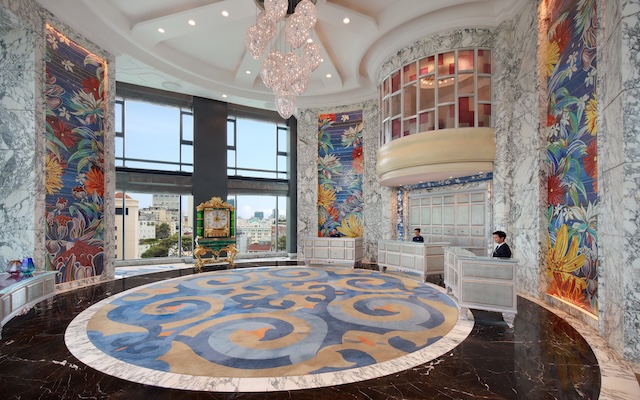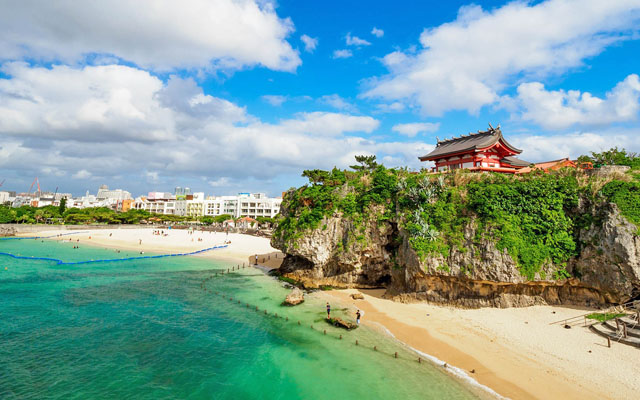PATA chair Peter Semone discusses the need to rethink tourism success in the Asia-Pacific, calling for a shift from growth-based metrics to models that prioritise community well-being, environmental resilience, and cultural preservation
 At the PATA Annual Summit in Istanbul, and in preparation for a period of significant disruption and opportunity, PATA recalibrated its vision and mission, aiming for “a meaningful Pacific Asia tourism economy” to be achieved through innovation, collaboration, and adaptability. Inspired by the event in Istanbul, this article shines further light on this new thinking.
At the PATA Annual Summit in Istanbul, and in preparation for a period of significant disruption and opportunity, PATA recalibrated its vision and mission, aiming for “a meaningful Pacific Asia tourism economy” to be achieved through innovation, collaboration, and adaptability. Inspired by the event in Istanbul, this article shines further light on this new thinking.
Tourism in the Asia-Pacific region faces an unprecedented convergence of existential threats – climate change, technological disruption, and geopolitical instability. These forces will challenge our assumptions and upend traditional models.
Climate change threatens the very ecosystems and landscapes that attract travellers. For PATA’s numerous Small Island Developing States and coastal destination members, rising sea levels imperil resorts, while extreme weather increasingly disrupts travel. Aviation – central to global tourism – is under scrutiny for its emissions. Yet, if we act with vision, these challenges can serve as catalysts for innovation.
Technology in tourism is a double-edged sword. While it risks widening digital divides, it also opens doors. Digital platforms enable youth- and women-led tourism businesses to access global markets. Smart data can support real-time management, crowd control, and better destination planning. The challenge is to ensure that technology empowers communities, not just corporations.
Tourism depends on peace. Its expansion – from 25 million to 1.5 billion international arrivals in 75 years – was built on post-war stability. But rising nationalism and geopolitical unrest make travellers wary.
In this moment of uncertainty, the dodo bird offers a powerful metaphor. Once abundant in Mauritius, the dodo had no natural predators – until humans arrived. In a few decades, it was extinct. The dodo is a symbol of irreversible loss and a cautionary tale of how quickly exploitation and complacency can erase what we assumed was permanent.
Asia-Pacific tourism now stands at a similar crossroads. Though the industry has prospered over many decades and rebounded post-pandemic, it is dangerously vulnerable. Climate change, overtourism, invisible burdens and unsustainable growth demand a radical rethinking of how tourism is designed, delivered, managed, and measured.
The pillars of liveability and a meaningful tourism economy
We are nearing a critical tipping point. Climate change threatens natural wonders, mass tourism erodes culture, and host communities are growing disillusioned. This is not a distant threat; it is an unfolding reality unless we redefine tourism success in Asia and the Pacific.
Tourism, once celebrated for its promise, is now met with growing scepticism. As someone married to a Balinese, I have seen how unmanaged tourism disrupts local life. The Balinese philosophy of Tri Hita Karana – harmony among people, nature, and the divine – is strained. Communities feel side-lined and commodified.
But here lies a core truth: what is good for residents is good for visitors.
Tourism, when shaped by foresight, can connect cultures, foster understanding, and support inclusive development. A great place to live is a great place to visit.
Investing in liveable communities means investing in safe streets, accessible infrastructure, public services, and vibrant cultural life. These enhance both local life and the visitor experience.
Smart cities, clean utilities, public transit, and healthcare aren’t just resident amenities – they are the building blocks of meaningful tourism. So too are clear crisis response protocols, strong civic pride, thoughtful urban design, and authentic cultural expression. Tourism must prioritise real, lived culture over staged performances.
Community-based tourism gives locals agency, preserves identity, and distributes benefits more fairly.
A meaningful tourism economy respects people and place. It promotes fair wages, environmental stewardship, and social equity. Liveability-driven development transforms cultural preservation into a source of pride and progress.
Tourism economics for dodos
For too long, the tourism industry has equated success with growth: more arrivals, longer stays, and higher spending. But this narrow focus has come at the expense of sustainability, resilience, and local well-being. In today’s world, those metrics are no longer sufficient, and continuing to chase them risks doing more harm than good.
Overemphasis on visitor numbers distorts priorities. It leads governments to invest in promotion rather than protection, marketing over management.
As Peter Drucker famously said: “If you can’t measure it, you can’t manage it.”
Yet the dominant tools we rely on, such as Tourism Satellite Accounts, continue to prioritise volume over value.
We don’t need to discard tourism economics; we need to evolve it. Success must be redefined to reflect what truly matters: thriving communities, preserved cultures, and healthy environments. It’s time to measure the real value of tourism; not just how many come, but how much it gives back.
New success indicators for the PATA region
As PATA nears its 75th anniversary, this is not just a time to reflect, but to reimagine. We must chart a future that aligns with the realities of a changing world.
The old model of measuring tourism success by headcount and spending is no longer enough. We must ask deeper questions: is tourism uplifting communities? Is it sustaining culture and nature? Is it fostering peace?
To guide this shift, PATA is developing the PATA Index, a benchmarking tool that evaluates tourism performance enabling destinations to assess how tourism revenues are reinvested, or how cultural heritage is lived rather than displayed. Ultimately, this will reorient focus from promotion to purposeful management, and from short-term gains to long-term value.
Tourism must be part of the solution to today’s existential threats:
- On climate, action is urgent. Maurice Strong warned us decades ago: delaying action is like rearranging deckchairs on the Titanic. The SUNx Dodo Learning initiative helps prepare young people to embrace climate-friendly travel through creativity and education.
- On technology, equitable access is key. With the right tools and safeguards, technology can empower microenterprises, improve visitor flow, and enable smarter planning.
- On geopolitics, tourism remains a quiet force for peace. Mark Twain wrote: “Travel is fatal to prejudice, bigotry, and narrow-mindedness.” In an age of polarisation, tourism builds bridges. The PATA region, rich in culture and hospitality, is uniquely positioned to lead this soft-power diplomacy.
Asia-Pacific is not only resilient, it is resourceful. Tradition and modernity coexist here in dynamic harmony; but leadership requires shared action. The PATA community must rise together to reframe tourism as a driver of resilience, equity, well-being and meaningfulness.
Conclusion: A choice for the future
Like the dodo, Asia-Pacific tourism may not see the danger until it’s too late. But unlike the dodo, PATA has foresight, and the power to act. Now is the moment for PATA destinations to lead – not just as engines of national economic growth, but as stewards of something far greater: community well-being, cultural continuity, environmental resilience, and global understanding. Redefining success is no longer optional – it is imperative.
PATA will meet this moment with vision and resolve by supporting a meaningful Pacific Asia tourism economy that gives back more than it takes. Our members will demonstrate that we have heard the warning and chosen a wiser path.
The PATA region stands at a crossroads. The next chapter is unwritten. Let us not follow the dodo into oblivion, but rise instead as a model of regeneration, resilience, and meaningful progress.

















